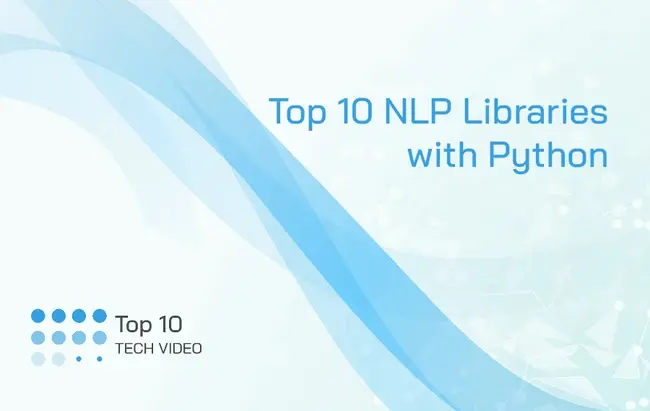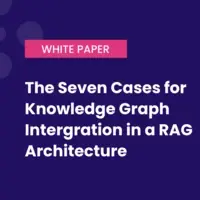
Natural Language Processing is one of the most exciting components of the machine learning and artificial intelligence space. This technology empowers communication between machines and human beings, by allowing computer algorithms to process human voice.
NLP (Natural Language Process) simplifies transcription, paves the way for real-time translation, and even helps to build smart assistants. However, for developers to take full advantage of NLP technology, they also need libraries that help them to unlock all the features of this machine learning concept. Here are some of the top NLP libraries designed for Python users.
NLTK
Otherwise known as “Natural Language Toolkit,” NLTK is a world-leading platform where developers can work with Python to build AI experiences. NLTK provides access to an easy-to-use interface for more than 50 linguistic and corpora resources like WordNet, plus there’s a suite of text processing tools for parsing, reasoning, tokenisation, and classification.
Widely considered one of the most accessible solutions in the Python environment, NLTK is ideal for developers making their first steps into the world of Natural Language Processing with Python. There’s even a host of documentation to help you get started.
Interested in learning more about the NLP communication model and other forms of AI? Subscribe to the YouTube Channel for more educational content.
SpaCy
Defined as an “industrial strength” solution for NLP technology, spaCy helps developers to accomplish incredible things with both Python and Cython. This highly agile, stable, and cost-effective solution is entirely open-source. SpaCy also comes pre-equipped with features like pre-trained statistical models, tokenization in various languages, and blazing fast speeds.
If you need a service that excels at massive-scale extraction tasks for data management, this is the library for you. The SpaCy environment offers excellent accuracy and reliability, with a wonderful, ever-growing ecosystem.
Flair
Created by the Big Data Value team, Flair is a powerful and easy-to-use open-source NLP library. This easy-to-deploy environment comes with various state-of-the-art NLP models to check out, equipped with features like part-of-speech tagging, named entity recognition, sense disambiguation, and more.
The massive Flair community has allowed the service to evolve into a multilingual service available in a range of languages. There’s also a simple interface where you can combine different document and word components, including proposed tools from Flair, ELMo and BERT embeddings. Everything is built on Pytorch to make training your models easier.
Gensim
An open-source and free-to-use library for Python-based Natural Language Processing, Gensim is a compelling service for training large-scale models in your business. You can find semantically related documents in the system with document indexing and similarity retrieval. There’s also support for text representations via semantic vectors.
Broadly adopted around the world, Gensim is suitable for all kinds of topic modelling tasks. It’s a great product for those who need to access high-level processing speeds and handle massive chunks of data. The algorithms within the library are also memory independent too.
TextBlob
Built on the shoulders of alternative Python NLP libraries like Pattern and NLTK, TextBlob is a marvellous extension capable of handling various NLTK functions. This Python library makes it quick and simple to process textual data, with a simple interface that’s great for sentiment analysis, noun phrase extraction, and PoS tagging.
Recommended as the ideal tool for NLP novices, TextBlob is simple yet scalable, with easy-to-access API technology users can segment into various NLP tasks. The service works with things like word inflection, classification, part-of-speech tagging, and more.
CoreNLP
CoreNLP by Stanford, or Stanford NLP is a library designed for all kinds of natural language processing in Java and Python. The service offers a range of human language tools to simplify the use of linguistic services in the technology world. Individuals using CoreNLP can extract various text attributes using only a few lines of code.
ColeNLP blends many of the existing Stanford NLP tools, such as named entity recognition, part-of-speech tagging, sentiment analysis, parsing, bootstrapped learning for patterns, and information extractions. These tools all deploy deep learning rule-based machine learning strategies.
Pattern
Pattern is a machine learning, natural language processing, web mining, and text processing service built for Python. This network analysis and machine learning module is one of the best-known in the world, responsible for all kinds of non-scientific and scientific congregation tasks. There are various tools built into the solution for data mining, like sentiment analysis and part-of-speech tagging.
Pattern is popular thanks to its straightforward formatting for syntax and ultra-fast development framework for companies hoping to build their own NLP solutions.
PyNLPI
Pronounced “Pineapple” by those who know it, PyNLPI is a Python-focused library for Natural Language processing needs. This solution includes a variety of customisable modules intended for NLP tasks, such as the extraction of frequency lists and n-grams, and the development of easy language modelling experiences.
One of the most appealing features of PyNLPI is a powerful and extensive library for working with FoLiA XML technology. Everything within this product is broken down into simple packages and models, beneficial for advanced and common NLP tasks.
Scikit-Learn
One of the better-known tools for Natural Language Processing on the market, Scikit-learn, provides developers with a wide selection of algorithms for immersive machine learning. The power behind this library comes from things like automated classification and enhanced documentation for developers who are just getting started.
Perfect for those who are keen to learn about NLP technology, Scikit-Learn gives you access to various functions for implementing bag-of-words methods for text classification. However, as appealing as this service is for beginners, it does not offer neural networks for pre-processing of text.
Polyglot
A powerful Python library for Natural Language Processing, Polyglot is ideal for a range of tasks that deal primarily with larger collections of languages. You might use this service if you want to create a multilingual NLP application, for instance. The Polyglot solution comes with comprehensive documentation access, tokenization, named entity recognition, and language detection.
Users can access part of speech tagging, sentiment analysis, and word embedding all within the same environment. What’s more, because Polyglot is so powerful from a multilingual perspective, it’s a great choice for companies where localisation is important.















Comments ( 0 )